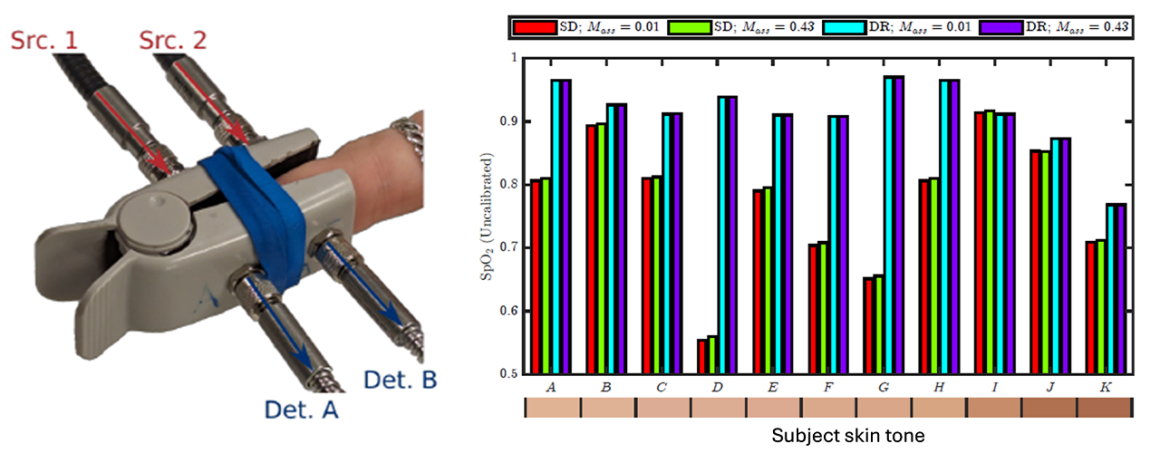Finger pulse oximetry
Pulse oximetry is a ubiquitous technology for non-invasive measurements of arterial oxygen saturation. It relies on optical measurements, at red and near-infrared wavelengths, of pulsatile absorption in tissue that results from arterial dilation and constriction associated with the systole and diastole phases of the cardiac cycle. Despite the success of the technology and its widespread use, it suffers from a number of limitations, mostly in relation to inaccuracies associated with intersubject variability that may not be fully taken into account by the typical instrumental calibration approaches. We have used a self-calibrated FD-NIRS approach in the past for pulse oximetry in the human brain without a need for calibration. Removing the requirement of a preliminary calibration and performing self-contained measurements in each subject may partially address the issue of intersubject variability. In particular, one significant source of intersubject variability is skin tone, which has been reported to potentially confound the accuracy of pulse oximetry.
We performed an initial study of the impact of different levels of melanin content in the epidermis on measured pulsatile saturation (SpO2) with conventional single-distance measurements as well as dual-ratio measurements. The study involved Monte Carlo simulations as well as measurements on eleven subjects (6 males, 5 females; age range: 23-59 y.o.) with skin tones ranging from 5-7 on the Monk scale. The main results of this initial study are that:
- While skin tone has an impact on SpO2 measurements, different spatial heterogeneities of the pulsatile absorption in tissue, reflecting different perfusion levels, vascular architecture, or other anatomical features, may account for greater variance in SpO2 than different skin tones;
- The variance in SpO2 measurements with dual-ratio methods is less than with conventional single-distance methods.
Fig. 1. Left: Finger clip housing for two source fibers (1, 2) and two detector fibers (A, B) for dual-ratio pulse oximetry in a transmission geometry. Right: Measurements of SpO2 on eleven subjects (A-K) with different skin tones using single-distance or dual-ratio measurements, and assuming different levels of melanin content.
See also:
- G. Blaney, J. Frias, F. Tavakoli, A. Sassaroli, and S. Fantini, “Dual-ratio approach to pulse oximetry and the effect of skin tone,” J. Biomed. Opt., submitted (2024).
- M. A. Franceschini, E. Gratton, and S. Fantini, “Non-Invasive Optical Method to Measure Tissue and Arterial Saturation: an Application to Absolute Pulse Oximetry of the Brain," Opt. Lett. 24, 829-831 (1999).
